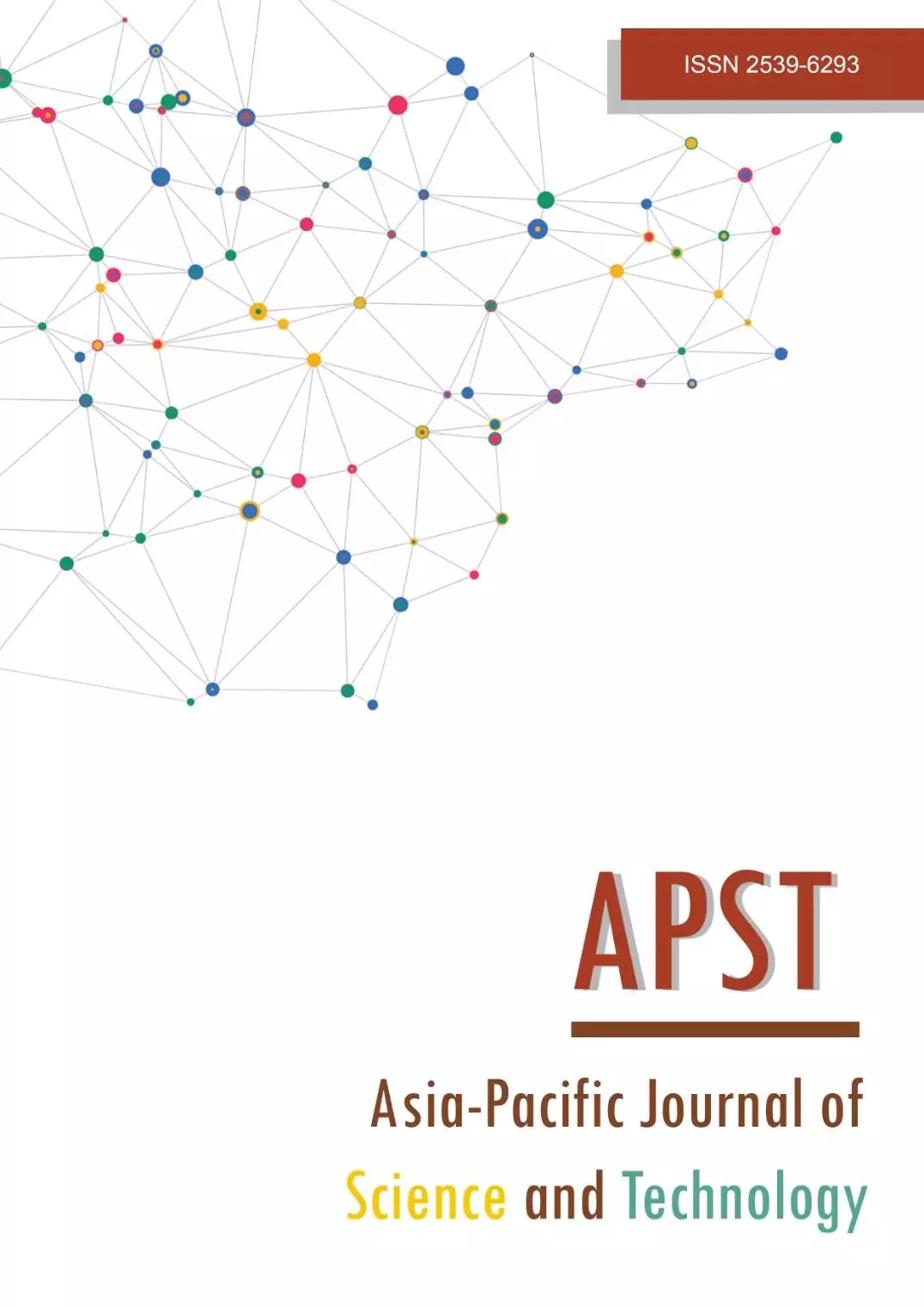Geotechnical characteristics of peat soil in OKI area, South Sumatra, Indonesia
Main Article Content
Abstract
Peat soil is characterized by a high-water table, significant compressibility, and low bearing capacity. Due to these characteristics, precise information about the physical, hydraulic, and mechanical properties of peat soil is required for the successful evaluation of suitability and improvement techniques in determining safe infrastructure through field and laboratory investigations. In this paper, soil properties, permeability, vane shear tests, and triaxial tests were conducted on peat soil at the locations of Kayu Agung, Pedamaran, Pedamaran Timur, and Ogan Komering Ilir (OKI), South Sumatra. Based on the samples obtained from the borings, the average thickness of peat soil was categorized as very deep, except for the location in Pedamaran, which was extremely deep. The moisture content in the OKI area ranged from 350% to 635%, with the largest in the Pedamaran Timur district. Furthermore, samples from OKI were classified as sapric peat soil, with ash content ranging from 19.71% to 39.24%, showing high ash and moderately acidic. The correlation of various geotechnical properties of peat soil was very close, and new equations were developed. Based on the results of the Vane Shear Test and Triaxial Unconsolidated Undrained test, the consistency of the soil at each location point was found to be very soft. These results provide valuable information for identifying appropriate design parameters and establishing correlations needed for evaluating peat soil.
Article Details

This work is licensed under a Creative Commons Attribution-NonCommercial-NoDerivatives 4.0 International License.
References
Coordinator of the South Sumatra Regional Peat Restoration Team. Condition of the peat ecosystem of South Sumatra province. Palembang; 2021.
Elsayed A, Paikowsky S, Kurup P. Characteristics and engineering properties of peaty soil underlying cranberry bogs. In: Geo-Frontiers 2011. Reston, VA: American Society of Civil Engineers; 2011. p. 2812–2821.
Duraisamy Y, Huat BBK, Aziz AA. Engineering properties and compressibility behavior of tropical peat soil. Am J Appl Sci. 2007;4(10):768–773.
Zainorabidin A, Musa H, Mohamad B. Engineering properties of integrated tropical peat soil in Malaysia. J Geotech Eng. 2017;22(2):457–466.
Tong TI, Ling NL. Characteristics and correlation of the index properties peat soil : Parit Nipah. J Appl Sci Agric. 2015;10(105):19–23.
Estu Yulianto F, Harwadi F, Rusdiansyahi. Characteristics of Palangkaraya fibrous peat. MATEC Web Conf. 2019;276:05008.
Zimar AMZ, Nasvi MCM, Robert D, Jayakody S, Jayarathne JRRN, Smith J V. Experimental investigation on physical properties of peats in Western province, Sri Lanka. In: 10th Int Conf on Geotechnique, Construction Materials and Environment. Melbourne, Australia: Geomate; 2020. p. 1–7.
Johari NN, Bakar I, Aziz MHA. Consolidation Parameters of Reconstituted Peat Soil: Oedometer Testing. Appl Mech Mater. 2015;773–774:1466–1470.
Yamazoe N, Tanaka H, Ogino T, Nishimura S. Mechanism of sampling disturbance for peat ground and its influence on mechanical properties. Soils and Found. 2023;63(5):101361.
Sutejoa Y, Dewi R, Hastuti Y, Rustam RK. Engineering properties of peat in Ogan Ilir regency. J Teknol. 2016;78(7–3):61-69.
Sutejo Y, Saggaff A, Rahayu W, Hanafiah. hydraulic conductivity and compressibility characteristics of fibrous peat. IOP Conf Ser Mater Sci Eng. 2019;620(1):012053.
ASTM D2573-08. Field vane shear test in cohesive soil. Annual Book of ASTM Standards. ASTM International; 2008. p. 1–8.
ASTM D2216-19. Standard test methods for laboratory determination of water (moisture) Content of Soil and Rock by Mass. ASTM International; 2019. p. 1–7.
ASTM D6913/D6913M − 17. Standard test methods for particle-size distribution (gradation) of soils using sieve analysis. Annual Book of ASTM Standards. ASTM International; 2017.
ASTM D 2974-20. Standard test methods for moisture, ash, and organic matter of peat and other organic soils. ASTM International; 2020. p. 1–5.
ASTM D1997-20. Standard test method for laboratory determination of the fiber content of peat. Annual Book of ASTM Standards. ASTM International; 2020. p. 1–4.
ASTM D2976-22. Standard test method for pH of peat materials. ASTM International; 2022. p. 1–4.
ASTM D5084. Standard test methods for measurement of hydraulic conductivity of saturated porous materials using a flexible wall permeameter. ASTM International; 2016. p. 1–24.
Wahab N, Khaidir M, Talib A, Latifah N, Madun A, Pakir F. Comparative study of peat properties in Johore Malaysia. Asia Pac J Sci Technol. 2023;28(4):1–8.
D 4427–92 (Reapproved 2002). Standard classification of peat samples by laboratory testing. Annual Book of ASTM Standards. ASTM International; 2002. p. 1–3.
MacFarlane IC. Physical behaviour of peat derivatives under compression. Internal Report (National Research Council of Canada), NRC Publications; 1968.
Zulkifley MTM, Ng TF, Raj JK, Hashim R, Ghani A, Shuib MK, et al. Definitions and engineering classifications of tropical lowland peats. Bull Eng Geol Environ. 2013;72(3–4):547–553.
Alaska Department of Transportation and Public Facilities. Alaska Guide to Description and Classification of Peat and Organic Soil. Juneau: Alaska Department of Transportation and Public Facilities; 2007. p. 1–9.
Huat BBK, Kazemian S, Prasad A, Barghchi M. A study of the compressibility behavior of peat stabilized by DMM: Lab model and FE analysis. Sci Res Essays. 2011;6(1):196–204.
Wahab A, Hasan M, Kusin FM, Embong Z, Zaman QU, Babar ZU, et al. Physical properties of undisturbed tropical peat soil at Pekan district, Pahang, West Malaysia. Int J Integr Eng. 2022;14(4):403–414.
Pandey S, Lamichhane A, Acharya I. P. Evaluating The Undrained Shear Strength of Kalimati Soil Using Field Vane And Unconfined Compression Test; A Study on Applicability of Bjerrum’s Correction Factor. J Adv Coll Eng Manag. 2023;8(1):59–68.
Ayadat T. Determination of the undrained shear strength of sensitive clay using some laboratory soil data. Stud Eng Technol. 2021;8(1):14.


